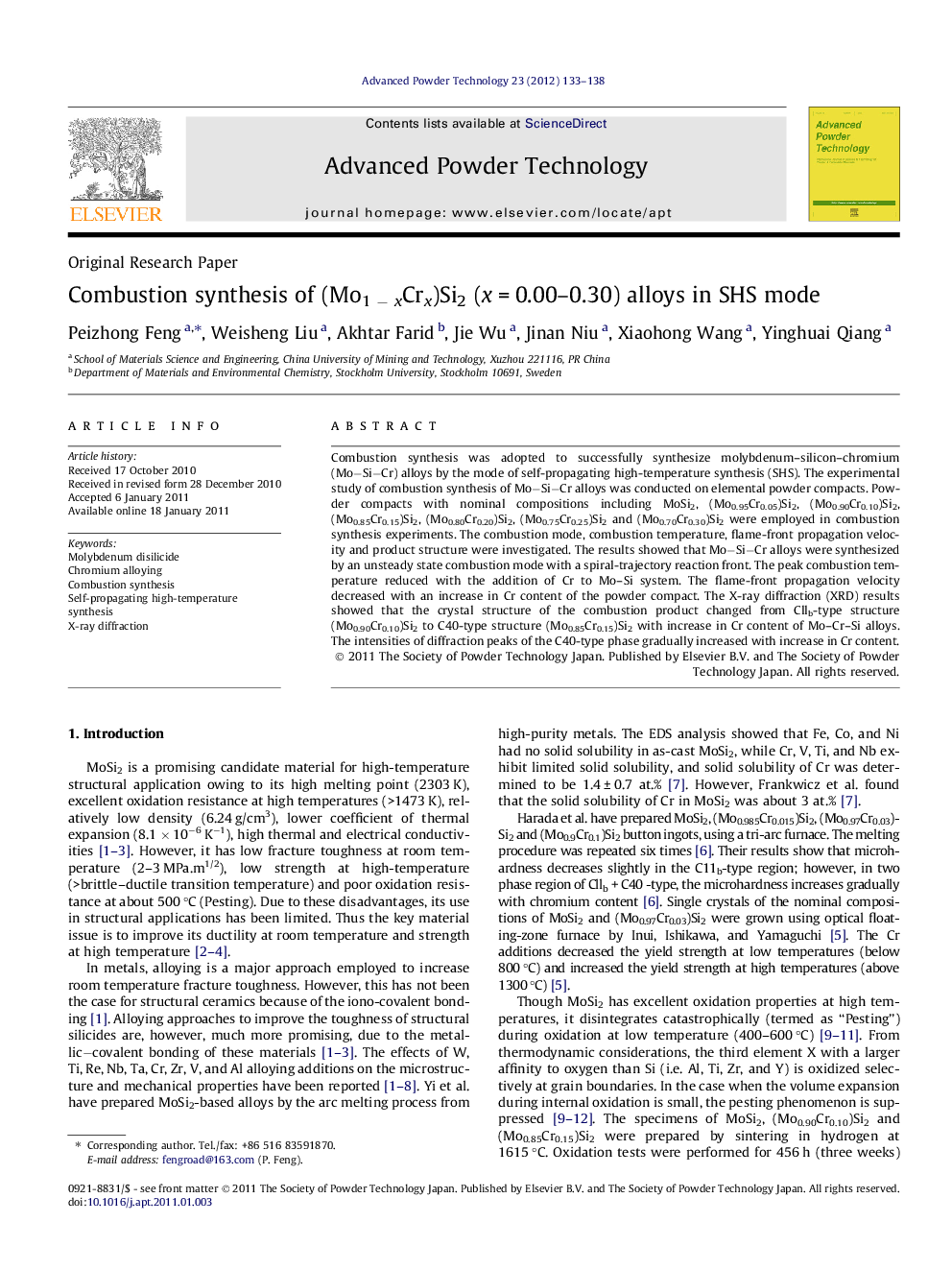| Article ID | Journal | Published Year | Pages | File Type |
|---|---|---|---|---|
| 144505 | Advanced Powder Technology | 2012 | 6 Pages |
Combustion synthesis was adopted to successfully synthesize molybdenum–silicon–chromium (Mo−Si−Cr) alloys by the mode of self-propagating high-temperature synthesis (SHS). The experimental study of combustion synthesis of Mo−Si−Cr alloys was conducted on elemental powder compacts. Powder compacts with nominal compositions including MoSi2, (Mo0.95Cr0.05)Si2, (Mo0.90Cr0.10)Si2, (Mo0.85Cr0.15)Si2, (Mo0.80Cr0.20)Si2, (Mo0.75Cr0.25)Si2 and (Mo0.70Cr0.30)Si2 were employed in combustion synthesis experiments. The combustion mode, combustion temperature, flame-front propagation velocity and product structure were investigated. The results showed that Mo−Si−Cr alloys were synthesized by an unsteady state combustion mode with a spiral-trajectory reaction front. The peak combustion temperature reduced with the addition of Cr to Mo–Si system. The flame-front propagation velocity decreased with an increase in Cr content of the powder compact. The X-ray diffraction (XRD) results showed that the crystal structure of the combustion product changed from Cllb-type structure (Mo0.90Cr0.10)Si2 to C40-type structure (Mo0.85Cr0.15)Si2 with increase in Cr content of Mo–Cr–Si alloys. The intensities of diffraction peaks of the C40-type phase gradually increased with increase in Cr content.
